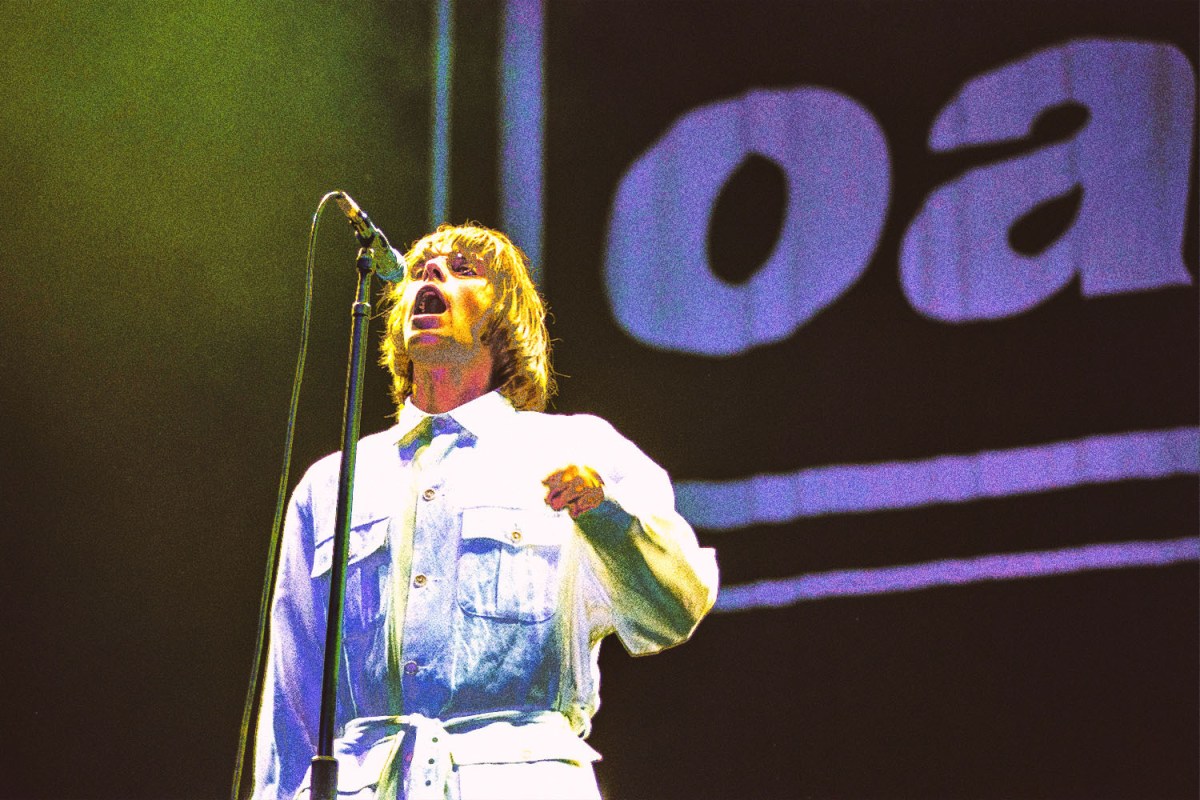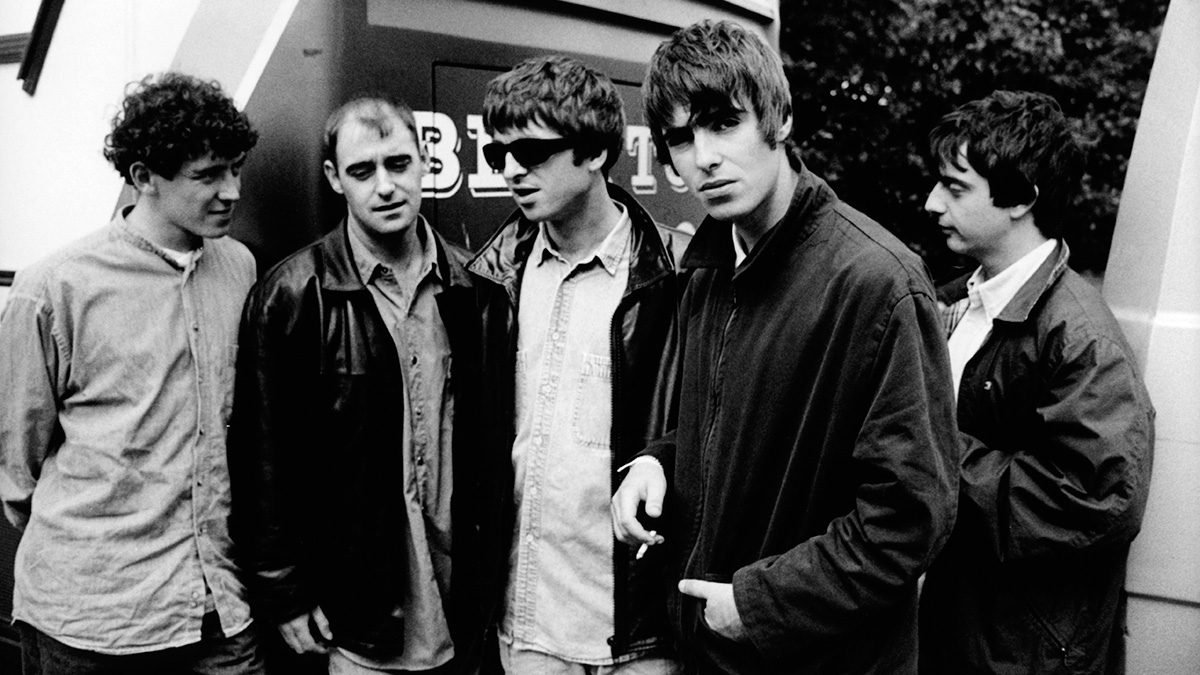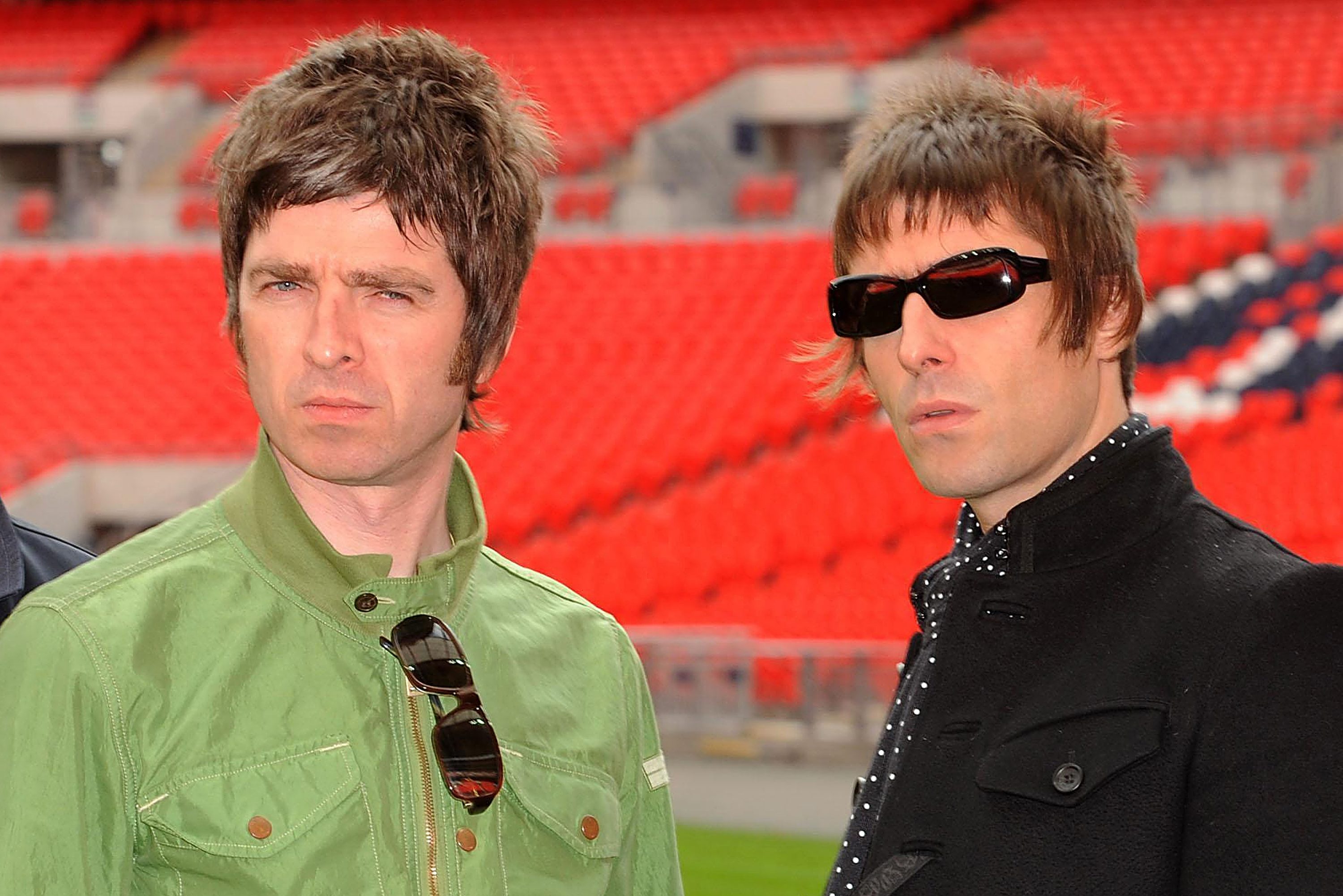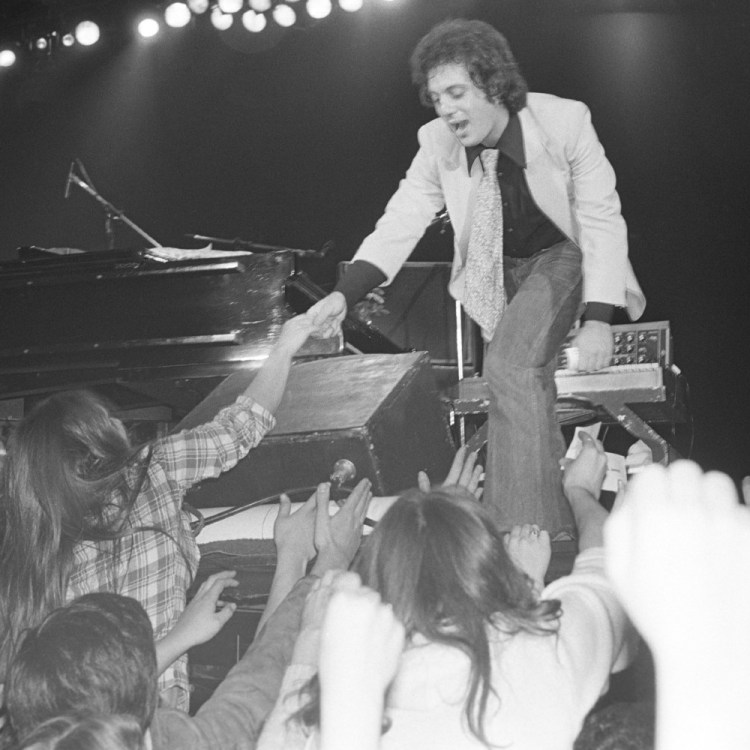Ed. note: On Aug. 27, 2024, the impossible happened. Noel and Liam Gallagher announced that after 15 years of fighting, they’re putting their differences aside and reuniting for a reunion tour. Oasis will play 14 shows in the U.K. and Ireland next year. According to a press release, shows outside of Europe will be announced at a later date. Those of us in North America will just have to wait a little longer to try to snag tickets. In the meantime, while we wait, we thought it’d be fitting to revisit this piece — originally published in 2021 — about another historic live show in the band’s history.
In the summer of 1996, for one brief moment, Britpop ruled the world. Definitely Maybe and (What’s The Story) Morning Glory? by Oasis and Parklife by Blur led the charge, while albums by the likes of Radiohead, the Verve, Supergrass, Pulp and even the Spice Girls peppered the charts from Japan to United States, where music from the U.K. had only occasionally broken through the pop/grunge/hip-hop stranglehold on the Billboard Hot 100 since the early days of MTV, had been bitten by the Britpop bug.
“We landed in the U.S. to do a tour on the day Nevermind by Nirvana was released,” Alex James, the bassist of Blur recalled. “It was the album of the decade, even then. We’d had a minor college radio hit, but that forced us to rethink what we were doing. So, we really embraced our Britishness — the clothes and the music — and our next album, Modern Life Is Rubbish, really reflected that. Pretty soon mods on Lambrettas were turning up at our gigs, and we could tell something was happening. The culture was changing really fast and embracing exactly where we were heading, musically. By the time of Parklife, it was us and Oasis defining the moment.”
It was indeed in the U.K. — in the midst of Cool Britannia, and on the cusp of electing a progressive New Labour government after years of Thatcherite rule — where Britpop truly reigned, and Oasis were exactly the band to meet the moment.
“Oasis was divisive and different,” recalled Mark Cooper, a BBC producer who produced the 1997 documentary Oasis: Right Here Right Now. “They broke the rules with a visceral, very British kind of animosity about what they were doing.”
“They seemed to take what they were doing very seriously, including the partying side,” the DJ Gary Crowley added, in an effort to explain the allure of Oasis in the mid ’90s. “And, for a while, they seemed to be able to do both. But they were also incredibly prolific; both Noel Gallagher as a songwriter and them as a band.”
That laddish, combustible nature — not to mention the fist-pumping anthems that Gallagher seemed to be dashing off at will at the time — set Oasis apart from the likes of Blur and Radiohead.
“As I heard more songs, it became apparent this wasn’t a normal indie rock band,” Alan McGee, the head of the band’s label, the venerable upstart Creation Records, remembered of the period.
“That 12-month period around (What’s The Story) Morning Glory?, where everything Noel Gallagher did was golden, that was his imperial phase,” Oasis biographer Richard Bowes said. “He was untouchable. And he wasn’t bound by indie. He copied the Beatles, and he was unashamed about copying the Beatles, but rather than it being him ripping them off, he was taking the essence of their melodies and making those into songs. He was going for timeless, classic pop-slash-rock. The confidence that churned out classics that he then relegated to B-sides? That is absolutely outrageous confidence and ability. For that period, he got the Ivor Novello award.”
Remarkably, there was very little blowback from the band’s original, diehard core fanbase after the group’s popularity exploded, making them an inescapable part of mainstream culture.
“I had no issue with them becoming this massive thing that everyone loved,” James Corcoran, the host of the Oasis Podcast, recalled of that heady summer, when everything seemed to break in Oasis’ direction. “I was just really pleased. My team was doing well. Because it was like a football team.”
“After Definitely Maybe, I didn’t know what the fuck was going on,” Noel Gallagher remembered in 2019. “With Oasis, we started off right at the very top, at a place that took U2 a decade to get to.”
A new film captures the feeling of that summer, 25 years ago. Oasis Knebworth 1996, directed by Jake Scott in cooperation with the brotherly team that made Oasis tick, the ever-warring Noel and Liam Gallagher, is a love letter to a time before mobile phones or even the internet, when a crowd of over 250,000 fans over two days saw the Bootleg Beatles, Ocean Colour Scene, the Prodigy, Manic Street Preachers and, of course, Oasis on the grounds of a massive estate in the English countryside, riding the crest of the Britpop wave. (A live album and home video release of the film and the concerts from both nights will follow in November.)
“It was our promoter’s idea,” Noel Gallagher told me. “I went out to the site with our manager, and it just looked like a massive, empty field. But I liked the idea of playing where Queen and Led Zeppelin and everyone else had played. In the end we put two nights on sale. They told me after we’d sold those out that we could have played eight.”
In fact, the demand to attend the shows was so huge that 2.5 million people — more than four percent of the U.K.’s population at the time — had applied for tickets.
“It was so fucking quick,” multi-instrumentalist Paul “Bonehead” Arthurs recalled in 2019. “I didn’t really stop to think what was going on, or how it was happening. But overnight, people were coming to see us, and there was this whole buzz; this whole vibe was happening. But it was happening so fast, and we were so busy, that I really didn’t have time to sit down and take stock and think what was going on. It was incredible.”
“Since they’d played the massive homecoming gig at Manchester’s Maine Road, Oasis had moved from the front covers of music magazines and radio and were in almost every national newspaper on a daily basis,” added Louise Davies, who runs a long-running unofficial Oasis news site, and who was at Knebworth. “The gigs were talked about on the TV and on radio constantly. If you lived in the UK there was no way you could avoid them.”
Still, as always with Oasis, darker elements were afoot. The squabbling between the Gallagher brothers, as well as their well-documented feud with Blur, was beginning to overshadow the actual music.
“In the lead-up to Knebworth, they were tabloid fodder,” Bowes said. “There was very little new music, and therefore, the news was dominated by tabloid stories, which is a mark of how big they actually were. But I imagine when they booked Knebworth, they didn’t anticipate how mainstream they were. Of course, it became about the people who were backstage, and it became a cultural event, but more one to be at rather than one to appreciate, because the headlines weren’t about the music.”
“I don’t even remember Knebworth,” Liam Gallagher told me, fittingly, when I asked him in 2017 about his memories of the weekend.
While Oasis are the star attraction of the film, it also — aptly, considering how important the massive fan culture that had built up around the band in the barely two years they’d been on the British music scene by that point — focuses just as much on those who were there and who were touched by the Oasis phenomenon.
“I thought that was excellent, as it isn’t just about those gigs,” Davies said. “The film is about what Oasis meant to people like me and others who loved that band and still do today.”
The concert itself, while hardly Oasis’ best, still epitomizes the band in its prime, and it gives viewers a sense of the scale of its massive appeal.
“The original lineup was the one,” McGee insisted of the band that, by Noel Gallagher’s recent count, had 18 members over the years. “They weren’t great players, but they had a real Mancunian edge.”
“Oasis was equally the five of us,” Noel Gallagher added. “When you’re in a five-piece band, everybody has their little place in it.”
As for Liam Gallagher, the moment at Knebworth was bigger than just the band, or even the songs.
“A lot of things went into it,” he insisted. “It was songs, it was the voice, it was the attitude, it was the look, it was the fans, and it was the people who fucking opened their ears and opened their minds.”
The film also memorializes a moment in pop culture that likely won’t — and perhaps can’t — happen again, in this scattered, social media-dominated world.
“That whole world of the music press, the world of the charts, and the way we consumed music, has died,” Cooper stated. “And that’s very nostalgic, you might say, but Oasis really were the very last band in Britain that could command the zeitgeist. They were a band that could make the whole nation listen. And that they could unify Britain in that period in time is really interesting, and probably has a lot to do with it being before the reign of social media or even, really, the internet. That’s why it feels like the last great narrative.”
“It’s all geared towards commerce now, music, I think,” Noel Gallagher contended. “It’s not about the, for want of a better word, artist, anymore. It’s about the team of songwriters behind the performer.”
As for the event itself?
“It felt there was an element of surprise, but also, there wasn’t,” Crowley, who acted as MC on the first night at Knebworth, recalled of the magnitude of the band’s stand — the biggest ever (and likely last) of its kind in the U.K. “They were the biggest band around. My memory of that day is of getting to the site and just looking at the audience, and I’d never seen anything of that size.”
“My friend picked me up and put me on his shoulders, and I remember looking around in total amazement,” Davies added. “I couldn’t believe how many people were there. It was an endless sea of people.”
And for those who were in the eye of the storm, it was an era-defining event, now preserved in celluloid for the ages.
“I remember Noel saying, ‘This is history, right here, right now,’ when they came out,” Corcoran recalled. “And that’s the thing, we knew at the time. All the way through, we were mythologizing Oasis as they went, anyway. We knew this was a special moment, like when a football team has a historic run. So, when he said, ‘This is history, right here, right now,’ it was like, ‘Yeah.’ Because it was.”
Not everyone involved in the concert has spent the past two-plus decades lingering on it, however, and for Bonehead, the film provided an opportunity to reflect on its legacy — something he’d never properly considered before.
“I’d never sat down and dwelled on it before, because getting to Knebworth, and coming out of the helicopter, when you’re part of it, it’s just going so fast, you don’t sit back and think, ‘What’s happening?’” he said. “It doesn’t feel like 25 years ago, and that’s a scary fucking thing. Twenty-five years in anyone’s life is a long time. It feels like eight years ago. But to actually sit and watch it for two hours, it really brought it home for me. It was just incredible. A real moment. A perfect moment.”
As for Liam Gallagher, he nicely sums up the feeling you’ll have after seeing the film.
“If you don’t get turned on by Knebworth, then you must be fuckin’ mental,” he insisted flatly.
This article appeared in an InsideHook newsletter. Sign up for free to get more on travel, wellness, style, drinking, and culture.
